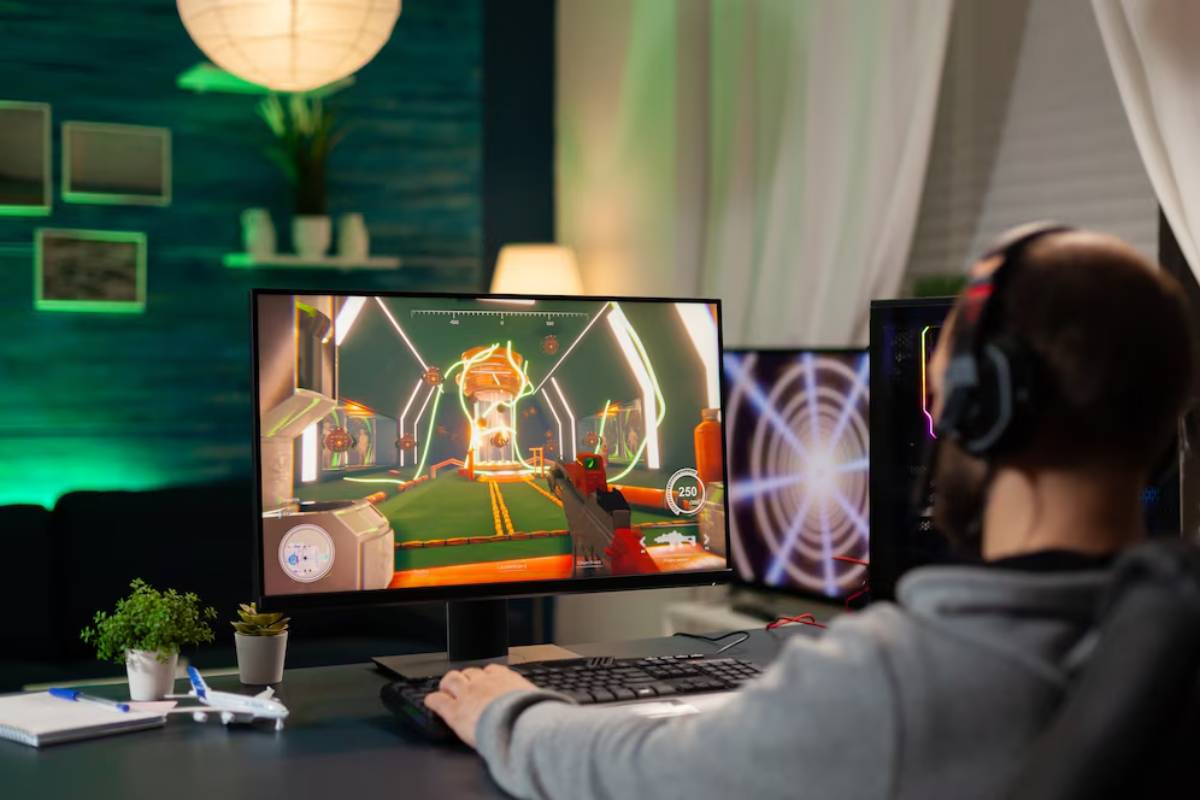
How Free-to-Play Models Affect Game Design
The gaming industry has changed a lot in recent decades. The free-to-play (F2P) model is now key in making and monetising games. This is especially true for first-person shooters (FPS). Looking ahead to 2025, developers and players must grasp the complex dynamics of F2P models. But how exactly does this model influence game design? And what does it mean for the future of FPS games? This blog post will explore how free FPS models affect game design. It will look at shooter funding and the broader world of monetisation.
The Rise of Free-to-Play Models
A Brief History of F2P Games
The free-to-play model isn’t a new concept. It started in the early 2000s. Games like Runescape and MapleStory set the stage for this approach. These games showed players that they could access content for free. They provided optional payments for cosmetic upgrades and convenience items, which means no upfront costs. But it was the launch of League of Legends in 2009 that made the model popular. This title demonstrated that free-to-play games could be both high-quality and immensely profitable.
This model succeeds because it is easy to access. Players can download and play games for free, opening up the audience to many more people. This low barrier helped F2P games succeed, especially in places where buying full-priced games was hard.
Why F2P Models Matter
The F2P model offers developers a unique opportunity to reach a wider audience. Without the barrier of an initial purchase, more players are likely to try the game. This model also provides ongoing revenue from microtransactions. These can include cosmetic items, battle passes, and other in-game purchases. Significantly, it shifts the focus from one-time transactions to long-term player engagement.
Players can enjoy high-quality games without paying upfront, which appeals to younger audiences and casual gamers. They might not want to spend money on expensive, full-priced games. Players can choose when and if they want to spend money, depending on how much they enjoy the game.
The Impact of Free-to-Play Models on Game Design

Designing for Engagement and Retention
One of the primary goals of F2P games is to keep players engaged and coming back for more. This shift in game design means developers now create addictive gameplay loops and focus on regular content updates. Daily missions, timed events, and reward streaks are common in F2P FPS games, and they encourage players to keep coming back.
Developers spend a lot of time on analytics and tracking player behaviour, which helps them improve the gaming experience. Metrics like session length, daily active users, and player churn rate help shape updates and new features.
Case Study: “Fortnite”
“Fortnite” is a prime example of how F2P models influence game design. Epic Games knows how to keep players engaged. They do this with regular updates and seasonal events. New mechanics and fresh storylines keep coming. Also, fun crossover promotions with popular media franchises arrive regularly. Also, innovative gameplay modes are always being added.
“Fortnite” keeps players engaged by regularly offering new content and challenges. This makes them more willing to buy cosmetic items and battle passes. The game’s success comes from its design, which blends monetisation with fun.
Balancing Monetisation with Player Experience
The F2P model has many benefits, but it also brings challenges. One key issue is balancing monetisation with player experience. Developers must prevent “pay-to-win” situations in games. This means players who spend money should not have a significant edge over those who don’t.
A strong F2P ecosystem means players should feel their success comes from skill and strategy, not how much they spend. Cosmetic-only monetisation models are popular. In these models, paid items don’t change gameplay. However, some developers go further with loot boxes and premium tiers.
Common Mistakes to Avoid
- Too Much Focus on Microtransactions: Games that depend too much on microtransactions can push players away. They may feel forced to spend money to keep playing. Monetisation should complement, not overshadow, the core game experience.
- Neglecting Core Gameplay: Focusing too much on monetisation can hurt innovation in core gameplay. Successful F2P games keep gameplay interesting, no matter how much a player spends.
Shooter Funding and Its Influence
Shooter funding is the money needed to create and support an FPS game. The F2P model significantly affects this funding. Developers must make enough money to cover ongoing development and server costs. This need often sparks creative ways to earn revenue.
Funding also impacts production quality and frequency of updates. When a game earns more money, developers can use that money to expand the game world, add new features, and improve performance.
Innovative Monetisation Strategies
- Battle Passes: They provide a tiered reward system. This system motivates players to play often to earn exclusive items. Battle passes build a feeling of progress and success. This keeps players engaged for longer.
- Seasonal Events: Limited-time events that offer unique rewards and encourage player engagement. These events often connect to bigger stories or real holidays. This makes them more exciting and relevant.
- Cosmetic Customization: Skins, emotes, and weapon effects look great and show status. Many players enjoy expressing themselves or showing off achievements through these items.
Advanced Insights: The Future of F2P FPS Games

The Role of Community Feedback
In F2P FPS games, community feedback plays a crucial role in shaping game design. Developers often use player feedback to shape updates. This helps keep the game fun and relevant.
Many development teams work full-time on community management. This includes engaging on social media, hosting live streams, and managing official forums. Surveys and public test servers (PTS) gather feedback on new features.
Example: “Apex Legends”
“Apex Legends” has used community feedback to improve gameplay and add new features. The developers connect with players on social media and forums, keeping their audience engaged and building a loyal player base.
User suggestions often bring changes. These can include character balancing, map rotations, and quality-of-life improvements. This shows how much a responsive development team values player input.
Ethical Considerations in Monetisation
As the F2P model changes, ethical issues in monetisation are becoming more critical. Developers face a tricky balance. They need to make money while also keeping games fair and fun.
Regulators in many countries are now looking closely at monetisation tactics. They are particularly focused on those that seem like gambling. Developers face pressure to adopt ethical standards. They need to be transparent to avoid backlash and legal problems.
Key Considerations
- Transparency: Being open about the odds of obtaining rare items in loot boxes. Some areas need to show loot box odds. Players like to know what they are paying for.
- Fair Play: Making sure every player can succeed equally, no matter how much they spend. Competitive integrity is key to long-term success, especially in the esports arena.
- Parental Controls: Many free-to-play games draw younger players, so giving parents tools to control spending and playtime is key.
Conclusion: How Free-to-Play Models Affect Game Design
The free-to-play model has changed FPS games. It brings chances and challenges for both developers and players. By 2025, it’s key for everyone in the gaming industry to understand how this model affects game design. Developers can create lasting FPS games by balancing monetisation and player experience. They should also use community feedback to make the games engaging and sustainable.
Call to Action
Are you a gamer or a developer with thoughts on the free-to-play model? Share your experiences and insights in the comments below. If you liked this blog post, share it with your friends. You can also subscribe to more gaming content! Let’s continue the conversation and explore the future of FPS games together!


